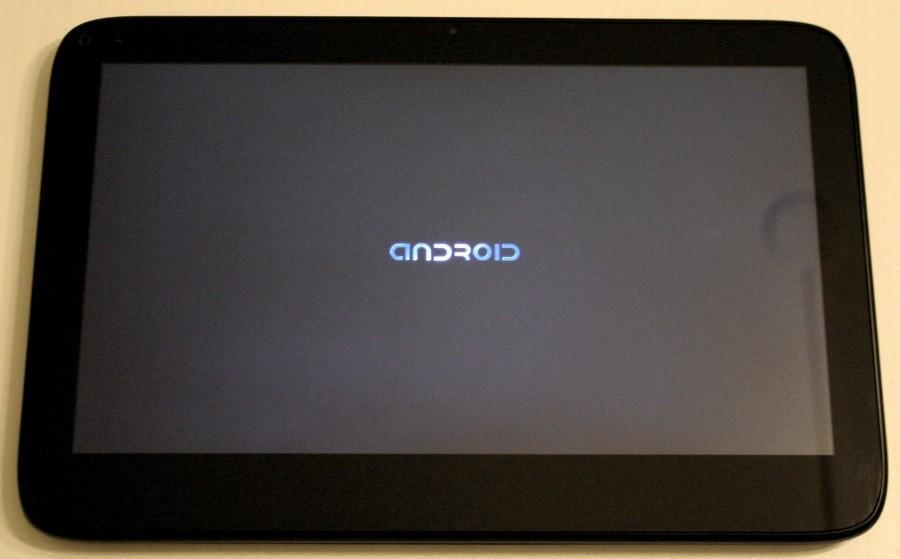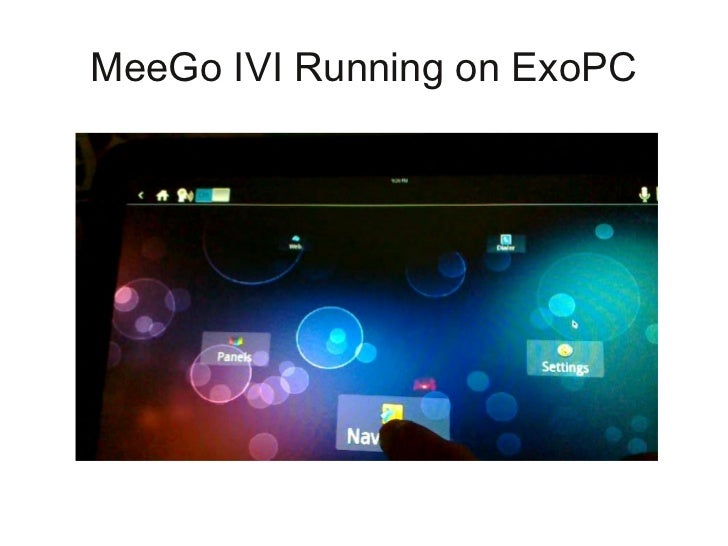
Ah something weird: I use magnetic hdds with a pata-to-usb adapter for booting the exopc and it very often fail to detect the bootable disk. I used Bios setup to restore the default (with exopc splash screen) and it seems to work better.
 The Exopc is a Windows 7 Slate with some pretty incredible specifications by today's standards and costs less than Android equivalents (or even many with far less 'Oommph' to them) so I thought to begin a port of Android over. I've never done this before but it seemed logical that the first step would be to get Linux working entirely first since Android is really just a layer over Linux.
The Exopc is a Windows 7 Slate with some pretty incredible specifications by today's standards and costs less than Android equivalents (or even many with far less 'Oommph' to them) so I thought to begin a port of Android over. I've never done this before but it seemed logical that the first step would be to get Linux working entirely first since Android is really just a layer over Linux.Using a USB flash device install approach, I got Ubuntu 10.10 x86 (and ultimately Debian 6/Squeeze amd64) working except for bluetooth and the touch panel. I Googled for days and found all sorts of tutorials and HOW-TOs on the issue, and with Ubuntu 32bit, installing the EETI eGalax
 binary package took care of the matter AND provided a rather nice control panel (maybe too nice since it helped me screw up right-click functionality).
binary package took care of the matter AND provided a rather nice control panel (maybe too nice since it helped me screw up right-click functionality).Debian Squeeze amd64 was another beast though and the primary issue where the EETI installer was concerned, comes down to hardware IDs and Xorg implementations. Their installer script isn't very robost and makes some very bad assumptions.
And I give the ExoPC UI Layer software 2 out of 5, simply because despite its genius ideas and concepts it is simply not ready for public consumption and it is a software disaster if applied to general use. The ExoPC overall with Windows 7 is neither ubertastically wonderful, nor is it an unusable waste. For the ExoPC we need the „meego-tablet-ia32-pinetrail“ paths and the files called „meego-tablet-ia32-pinetrail-1.2.0.90.6.20110628.2.img“ (replace the numbers with later versions). Copy the image to the USB flash driver and make it bootable; First plug-in a suitably large flash drive.
I ended up back at a tutorial I was constantly running across written by Samiux. The advice there made no difference for me though. After checking and double checking, I could see that xinput recognized the panel, but every time I tried to calibrate (with the stock app included with Debian or the one he suggested), I'd hit the 2nd point and it just wouldn't proceed. The cursor would go top left and that was all there was to it. I Googled more and found another, far less verbose tutorial, but the one thing it mentioned, that I recognized, had a very important difference compared to Samiux's.
The key is underlined and highlighted in the following because it's easy to miss:
GRUB_CMDLINE_LINUX_DEFAULT='quiet splash i8042.noloop=1 usbhid.quirks=0xeef:0x1:0x40'That '1' in '0x1' actually represents a hex value equivalent to '0x0001' but it was different in this other tutorial I saw. This made me recognize the '0xeef' prior as matching part of the device ID for my panel is it shows using 'lsusb'. Mine is '0xeef:0x72a1' so I updated that line to read:


GRUB_CMDLINE_LINUX_DEFAULT='quiet splash i8042.noloop=1 usbhid.quirks=0xeef:0x72a1:0x40'
Exopc Driver Licence
